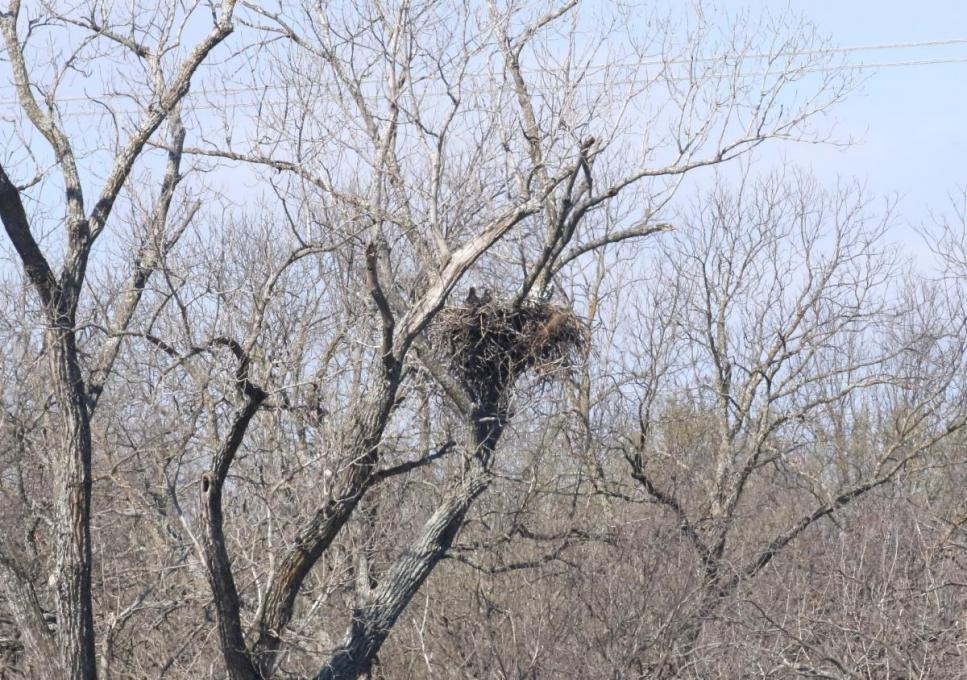The Cornell Lab Bird Academy › Discussion Groups › Growing Wild: Gardening for Birds and Nature › Joys of Naturescaping
-
We used to have a woods behind us that provided everything for our birds. We merely supplemented with our feeders. Now all bulldozed in preparation for 111 houses to be built. Birds were in shock but do come by form other nearby woods now.
-
 my current garden
my current garden -
It’s beautiful. Similar to an English garden.
-
Love it
-
-
I live in a rural, heavily wooded area. There was no lawn to speak of and over-grown bushes and weeds up to the door. The first thing I did was to mow it all down and create a lawn and a new perennial garden. It was what I was used to, growing up in suburbia, and felt like the right thing to do. But ever since doing that, I have regretted it. While I love my garden and it gives me lots of joy, I wish I had retained some of the wildness here on my wooded lot. So now my mission is to reclaim a portion of my lot to create a woodland garden with native plants. I’m very excited about this…it’ll be a first for me in my 40+ years of gardening.
-
Hi Jenn! That sounds like a great goal and I hope you have fun making it a reality. I hadn't thought about how the gardens we grow up seeing as kids can have an effect on the gardens we create as adults. This is a concept I will keep in mind as I take the class and I plan my own garden based on what is available in my yard. Thanks!
-
You can do it, get the native garden you want. There are so many online places to order native plants and seeds. I never thought about growing up with a certain type of yard that would influence the kind of yard I thought I should have. I am planting various areas of my yard with native plants slowly so my husband can get used to the idea of having less grass to mow. I am planting white clover in with my grass (it already has some) because the bees love it and it stays green even when there is little rain in the summer. It doesn’t need a lot of water.
-
-
We live in a subdivision of 20 acre parcels of shrub steppe in central Washington. Most of the property is bunch grass, sage, rabbit brush, arrow-leaf Balsom root, yarrow, lupine. and greasewood. We mostly notice raptors but other seasonal birds, too. Right now the meadowlarks are singing up a storm! And juncos hang out in the winter. Timothy Hay and alfalfa farms are nearby. I enjoy the wildness of our landscape, the sunrises and sunsets, the seasonal changes and most of the cool wildlife (excluding the rattlers). Our outdoor space brings a sense of peace and calm. I saw 18 deer this evening as I walked my dog; that is both a blessing and a challenge. They are beautiful but chew up what I plant in a heartbeat. A peach tree and cherry tree I planted last fall didn't last a night. What I'd like to change is to integrate new and different native plants to provide support for birds around the year. And, I'd like to incorporate plants that deter the deer, leave a legacy of stewardship of this property and bring delight to the neighborhood with color and beauty. It is dry here and the soil is very compacted and I have a challenge with invasive prostate knotweed, dalmatian toadflax, chamomile and thistle. So, choosing the right plants is important.
-
We are lucky to have some property in Western PA with a number of native plants growing already. 30 acres partially overgrown pasture, some wetlands and a good bit of woods. This picture is part of the "pasture". We get a lot (too many) deer, some common and some unusual small mammals, a good number of birds including a flock of turkey, geese, catbirds and we always get nests of Robins, carolina wrens, chickadees, mourning doves and others. While I would consider that I have always loved nature and bird watching, until my daughter planted a Monarda outside our Sunroom which attracted hummingbirds I was only marginally aware of specific plants being important for native insects - and even more started learning that numerous plants I thought I was doing something good with are actually invasive. I want to learn to identify invasive plants better and work towards removing them from our property and minimizing the area we keep mowed to what we need to do the outdoor activities we enjoy. I am sad I did not realize some of this 25 years ago as I could be a lot further along, but I will start where I am and try not to be overwhelmed.

-
here is a panoramic picture. the yard extends similarly to the left of the picture for an acre. The green is astroturf

-
Where do you live? It is beautiful in its own way. I am in the Eastern U.S. and there is a lot of trees and grasses.
-
-
We have a fairly open 3 acres with some native pine trees, quaking aspen, cottonwood and some deciduous maple north of Colorado Springs Colorado, at 7400 feet. There are pine cones and seeds, but we have very few bushes, flowering plants. We are newly landscaping an area that was domesticated 13 years ago. We have lots of finches, flickers, mountain bluebirds, juncos, red-winged blackbirds, pigeons, collared doves, and magpies. In the summer we get a few hummingbirds, meadowlarks, hawks and an occasional eagle. I have 5 berms (mounds of dirt covered with rocks or groundcover) that will protect us from road construction in future years. Trees also ring the house at a distance. One berm is ready for a small water feature and has feeders. It needs a small tree and some bushes and ground cover. It is about 30 feet from a small patio and grass area; and about 60 feet from a second story deck. One berm has two small native bushes. The others have no plants as yet. We want to put in a raised bed of annuals and herbs and butterfly type bushes but I have no idea what grows well here or what would look good together and fill in over a few years. Our grasses are all native (no sparse in some places - no green lawns). We have 40 or so antelope that venture through daily or every other day. They interact with the distant pines but tend to stay away from the house area. We have a Sheltie who marks his territory via an electric/invisible type fence.
-
We are in the northeast, 6b growing zone. We have 1/3 acre mostly grass, weeds and mud with mature trees and shrubs. Gray catbirds are seasonal in the forsythias. I started a hummingbird garden a couple years ago that has attracted hummimgbirds and butterflies. We grow hop vines to brew beer, and raised beds for vegetables as well as planters for annuals, tomatoes, herbs. We get a variety of common backyard birds, hawks, as well as migrating baltimore oriole and rose breasted grosbeak. Would like to make the overall landscaping more aesthetic with native plants to attract more birds and butterflies. I do contend with chipmunks, mice,deer and groundhogs. And have so far been able to keep the invasive Spotted Lanternflies to a minimum. Also concerned for puppy safe plants. Looking to learn where to start so I can have color and blooms for 3 seasons with native plants.
-
There are a couple elements of my yard that I really enjoy; the several older trees that provide a lot of shade in the summer, and the locations of the flower beds that allow me to see the flowering plants from the house. I want to change the variety of trees on my land. All the ash and elm trees in my area have been wiped out by insects or disease. As I replace the trees, I’ll use a more diverse group of native trees. There are also several invasive flowers that I want to replace with natives. In the last 2 years I’ve taken pictures of 35 different birds at my house. Now it’s far between new sightings. Since I now know which birds are common, at least it is easy to spot something different. There are still a few birds from our area Christmas Bird Count Common Checklist that could visit my house. That’s one reason I signed up for Project Feeder Watch, it makes take time and look at the birds.
-
I live in the Treasure Valley area of Idaho, Nampa specifically. We downsized from two acres with a TON of natural bird habitat in California to a new home that has, well a lawn and a sloped area behind the lawn up to the back fense. Let the games begin. My feeding stations
 are attracting a good amount of birds but there is no habitat for them to "hang" out so I feed them and they hang out in the established yards behind me.
I need evergreens along the back fence to hide the behind neighbors, some terracing perhaps and plants and shrubs suitable for a small hillside.
I am pretty much starting from scratch. In winter our lawns go dormant. Sorry for the messy picture, we just had a wind storm and my dogs agility equipment and bird feeding items went on a walk about.
are attracting a good amount of birds but there is no habitat for them to "hang" out so I feed them and they hang out in the established yards behind me.
I need evergreens along the back fence to hide the behind neighbors, some terracing perhaps and plants and shrubs suitable for a small hillside.
I am pretty much starting from scratch. In winter our lawns go dormant. Sorry for the messy picture, we just had a wind storm and my dogs agility equipment and bird feeding items went on a walk about. -
I have a few different places that I would like to make more bird friendly. Our home in Chicago, Illinois has a small yard and I would love to remove as much grass as possible and put in native plants to attract birds. I have planted a garden but end up battling rabbits. I put up bird feeding station and made the sparrows really happy as well as mice! We have a home in Cedar River, Michigan was previously used to graze livestock and horses. It has about 5 acres cleared the the remaining 35 is wooded. There is a nice pond. The concern here is that I have a lot of non-native buckthorn and phragmites grass that have taken over the pasture area. I need to work to remove that in a non-chemical way if at all possible before I can start over. Deer and bear are problems here for any bird feeding station. In the future I would love to have a very large garden for food production and include berry and fruit trees. Our last location is in Watersmeet, Michigan. We have a home on a private lake and our 20 acres is adjacent to the Ottawa National Forests. It is mostly wooded. I have feeders on our porch near the house but bear have been a problem as well as birds hitting my kitchen window. I would like to plant more native flowers that are hopefully deer resistant. I would also love to learn more about gardening at the water's edge to improve nesting sites for aquatic birds. We have loons and I would love to make things as favorable for them as possible. As you can see, I have my work cut out for me!
-
We moved into our house on Hilton Head Island a year ago. We have a lagoon in the backyard and tall live oaks and pine trees. I have put out feeders and had some landscaping done to attract the birds. We have a long way to go to reach our goals of providing an oasis for the birds and wildlife. I have 4 feeding areas for the birds and they visit all day long. I would like to create a lusher garden full of plants that offer natural food to them as well as the option for feeding on seeds at the feeders. I do have issues with deer and raccoons as well as feral cats. Feeders are baffled and up high as well as camouflaged with branches to keep the occasional feral cats at bay. The deer eat everything so that is also a challenge. I plant something and the next day they are gone or pulled up out of the ground. I am taking this class to learn more about our native plants and to hopefully find ideas that will enrich the biodiversity but also discourage the “trouble makers.”
-
I battle deer too and am looking at native plants to deter their grazing. We also have black bears. They have destroyed some feeders. The Michigan DNR wants feeders removed for at least 30 days after a bear visit which can certainly make feeding the birds a challenge. Best of luck on your bird gardening. I look forward to learning more from this course as well.
-
-
I live in Washington, DC. We have a deep, sunny back yard with a pond at the back (lots of frogs and dragonflies). There's a healthy rabbit population in the neighborhood so we bought a raised garden bed to grow herbs and lettuces. We recently started planting more native plants in our perennial beds such as bee balm, turtlehead and cone flowers. I'd like to remove a lot of the Siberian iris which is non-native and has become somewhat invasive and add some shrubs or even small native trees to provide year-round cover and perches. Weeds are a huge problem. We use one corner of the back yard to grow annuals for cutting and I'd love ideas on what natives might be appropriate for that purpose. We put seed out once or twice a day on our deck railing and also have a bird bath that attaches to the railing. These attract a lot of birds brave enough to get close to the house such as sparrows, blue jays, cardinals, mourning doves and an occasional red-bellied woodpecker. Carolina wrens often show up after the big guys have moved on. Squirrels also show up on the railing for seeds and water. We used to see a lot of chickadees and titmice and I'd like to try and attract them - don't know where they went! The back lawn has almost no grass, but it greens up every spring and looks fine when it's mowed. In the fall a purplish pink ground cover in the lawn attracts lots of honey bees.
-
I just really enjoy being outside both in winter and summer whether it is in my yard or the big outdoor yard of nature. My back yard has many vegetable garden boxes which I love tending. I also have an evergreen, mountain ash, chokecherries and native roses, snowberries and silver willow bushes, a fire pit and flower pots. This is all packed in a medium sized city yard. I am happy with my back yard. I don't sit in the yard that often but enjoy working in puttering. My front yard has a dogwood and two evergreens but the rest is grass which I don't tend very well. A couple of years ago I made two garden boxes and filled them with native plants and seeds. I would like to grow more native plants in my front yard as the grass does not provide any diversity for wildlife. Merlins. Robins, House Wrens, migrating sparrows, Juncos, House Sparrows, Cedar Wax Wings, Chickadees, Nuthatches, Northern Flickers, Grackles and Crows are some of the birds I see in my yard along with mice, jackrabbits and squirrels. Generally I see them foraging for food and robins, sparrows and wrens will nest in my yard if there are not a lot of Merlins around that year. I feed the birds i the winter both seeds and suet. Birds and squirrels come for the fare. I would like to bring more insects, butterflies, bees and birds into my yard by changing what I plant and grow providing a suitable habitat as many species are losing more and more of their habitat.
-
We bought a house in Lake Arrowhead, CA and live there half the week to be closer to nature. Our house is surrounded by huge conifers and black oaks, but unfortunately we lost 10 huge trees during a big storm, which also means fewer birds are visiting. We want to be mindful and intentional in what we plant to replace the trees, especially since it will take decades for anything to mature to what was lost. Not only with trees that we plant, but native shrubs and smaller trees as well. We also have a seasonal creek, and are curious to see how things evolve throughout the seasons. Right now we have a lot of Steller's Jays, Red-Winged blackbirds, Northern Flickers and occasionally Eurasion Collared Doves. We had hawks and falcons who would visit in the big trees before they fell, and are hoping they'll come visit us again.
-
We started converting our existing garden to Natives last year and any new gardens like this one has been Natives only. We have seen a huge increase in biodiversity in our yard. From birds to insects, reptiles and mammals. It has been fascinating to watch them all come in. We also have a very difficult task or removing many non-native invasive species in our yard that have created monocultures in are surrounding woodlands and lawn. Our dream is to recover our entire property and then slowly start removing the non-native invasives in the surrounding woodlands. We put this Native hellstrip in, in late spring/early summer of 2021. This year during our extreme heat and drought we witnessed a number of things we’d like to reassess this fall and winter. However, most of the plants thrived regardless of these factors. This picture is from this year about mid summer.

-
Beautiful. This is something I would like to get to in my yard. Of course "seeing" ahead a couple of years is difficult. And learning the native species is challenging. We also have wind at various times off the mountains... 30-40 mph !
-
-
My husband and I purchased our first home near Albany, NY early this past spring, on about 1.8 acres in a suburban area, with a lot of development in one direction and a nature preserve in the other. We decided to hold off on doing more than basic maintenance to the yard and property for our first year - partially out of necessity (the house itself was in relatively dire need of some love) and because we could tell the yard contained some mature garden that we knew nothing about from the previous owners, who lived here for the last 70 years and clearly cherished their outdoor space. The time we were able to spend outdoors has been occupied enjoying the front porch, and the feeder and bird bath I've put nearby, and having the occasional fire in the backyard. I mowed the grass areas (sporadically), and my husband waged war against the oriental bittersweet that had grown to horrific proportions and was threatening many mature trees on the property. I spent a lot of time on iNaturalist learning about what was already growing on the property, and unfortunately it appears that much of it is non-native, and worse, some is invasive. All is very overgrown. Our goals for next year are to establish a small vegetable / herb garden, and to begin the slow and gradual process of reclaiming or completely re-doing the gardening and landscaping on the rest of the property. There is a steep bank that leads down to a seasonal stream bordering one side of our yard, and another steep section in the back drops off to a small creek and marshy area. It's currently almost impossible to physically access either due to dense growth of bittersweet, invasive honeysuckle, buckthorn and some poison ivy, but I'd love to be able to clear a small space to sit and birdwatch in these areas. I read a bit about permaculture and decided to try starting from the areas nearest the house and work outward; this will also allow me to prioritize permanently removing the wisteria and English ivy that has decided to try and grow inside, as opposed to outside, the house. I'm hoping this course will help me learn how to incorporate native plants that will attract and provide for more birds, especially hummingbirds, and develop a long-term plan for the property that will be reasonable to maintain and supportive of the local ecosystem. I imagine I will be revisiting the course material MANY times over the coming decades!
-
I have slowly increased the planting of natives around the house and am slowly expanding with annual flowers and perennials. I have loved seeing the increase in birds. Small puddles in areas I have laid a tarp to clear vegetation, have attracted even more birds for the water. I make sure to keep the puddles present. I want to make the backyard full of trees and flowers and other natives that not only attract birds, but make the space a natural and friendly environment for men too :)
-
I love to sit on my patio and enjoy morning coffee, meals throughout the day and drinks in the evening with friends! We have many cardinals, robins and goldfinches in our yard. I've always put annuals in the patio space for looks but am very intrigued to put native plants in instead to attract birds and butterflies!
-
I began gardening in the PNW about 20 years ago. My MIL was a rose fanatic so I wanted that too. I have about 50 or so now. I also focused on just beauty without thinking about birds, bees, and wildlife. And yeah, it’s like park out there. But then I retired and started thinking about birds and how I could support more wildlife. I haven’t been focusing on natives AT ALL. So what I want to change is just that. I will identify the few natives that I have (a snowberry for sure) then try to figure out where I can put some others. I do have a lot of birds-chickadees, towees, wrens, woodpeckers including pileated, downy, and flicker. Robins, warblers, sparrows, junkos, and hummingbirds. I have recently started mulching with natural woody chips and I can already see birds preferring to hop around these beds and not so much just the feeder. Where you see the rock wall is where I lost a huge hemlock tree. It was a sad day when that came down as it displaced so many birds. I replaced it with a parrotia (not native) and the kousa dogwood. The native dogwood in the back is my neighbors and provides for some of what mine lacks. I would love to see more waxwings.

-
Your backyard is beautiful! I can see how it would bring you much joy!
-
Beautiful!
-
Lovely!!
-
-
I saw, on an Ebird photo, and orange slid over a branch. Like in this photo. And I learned, from this course, that water is more important than seeds, relatively. I installed 2 water baths, and 1-2-3, seed feeders. I saw, 6 American Goldfinches, all together, last week. And a male and female Cardinal, together, almost 5 times in the past week. This method, is more educated, than, say, putting a huge amount of seeds, and little/no water.

 thx. bjorn k.
thx. bjorn k. -
We moved to Fort Collins, CO from Texas six months ago. I have been taking a wait-and-see approach to the garden. We have terraced beds on the north side of the house that will be a challenge, as half of the beds are in shade most or all of the day. I'm hoping to identify native plants that will do well there. One of the beds gets a lot of morning (and some afternoon) sun, and I plan to put a birdbath there with a solar fountain, surrounded by flowering plants to attached butterflies and (I hope) hummers. I look forward to the challenge!
-
I live in a suburb northwest of Edmonton, AB, Canada. My front yard faces North and my bird feeder there brings in chickadees, nuthatches and downy, and pileated woodpeckers as well as the occasional flicker. My yard has no trees, but the neighbours’ trees which are tall spruce, ash and elm seem to bring the birds to the area. I would love to remove our front lawn and replace it with mainly low maintenance evergreen species, complementary native plants and shrubs to provide cover, nesting habitat and natural sources of food. My backyard, facing south, is where we spend all our time enjoying our deck, watching the birds at the feeders and bird baths and playing with the dogs. We recently put in some raised vegetable beds at the back of the yard where I also have a small very productive Evans cherry tree, a couple grapevines growing along the chainlink fence and a couple haskap bushes that the birds eat all the berries off before I manage to harvest any. The rest of the yard is lawn except for the entire east side along the fence which previously had a garden of perennials I had planted including a beautiful dropmore honeysuckle which attracted hummingbirds. Unfortunately, this farden has been overun by quack grass and so most of plants I put in have been strangled out. Ideally, I would love to get rid of the quack grass ( without chemical intervention) and fill the garden with hardy native plant species including some trees for shade as well as food and cover for wildlife as I only have the cherry tree and a lilac bush with any height or density in the area. I would also love to see a variety of colours in the plants and flowers throughout the year. Because of the dog, I will need to maintain some lawn, but I am okay with reducing the amount we have. Overall, there is a lot of potential given the southern exposure and lack of trees right now and I would just love to increase the biodiversity in my yard.
-
I am taking out my lawn in the front yard inside my picket fence. I have two shade trees, very large: a flowering crabapple and a locust. I am in Denver, zone 5b. I want a design that offers native bird and pollinator friendly plants in a more orchestrated design so that the birds who come have shelter, seed from the feeders, water and their own favorite plants and shrubs to hang out in. I want to be the neighborhood bird mom! It is an adventure I have been thinking about for awhile. The challenge will be the shade. I have high hopes that it will be just lovely in the end with patience.
-
I am from the Texas Blackland Prairie Region. I have never personally grown a garden, but I have grown a mixed woods/forest on my acreage, which used to be ag land. I have spent special care and time into the trees and fixing the pH of my large pond, now nestled within the wooded area, with native species (plant life and wildlife) to facilitate the healthy production of oxygen and natural pond bacteria back into it, in the hopes that migrating Anseriformes, Galliformes, et cetera, will have a safe haven when stopping by. Of course, I will be looking into similar effects of native fish on water health. I have always had personal gardening in the back of my mind, but with the amount of pole-driving and other maintenance required on the land, as well as our rescues, that has been put aside. I am currently working heavily with my local Wetland Center and have finally decided to make that push back to studying what will be the most beneficial for myself, plant life, insect life, bird life, et cetera, which is all in turn cyclical in the grand scheme of a native ecosystem. The wetland ecology is very new to me with the vast biodiversity present. I have even made a point to work with the Center and a former university of mine to reintroduce Bobwhite Quail in the vast secession of open lands in that region still. Even though not passerines, our quail are a great sign of a healthy ecosystem as well, and so I hope to achieve multiple ecological benefits via working with native plants with my own gardening, the Wetland Center's gardening, and even the native ecosystem of the wetlands itself. Our local nesting pair of Bald Eagles would be very happy to have a new plentiful source of food for their young, as well as our Northern Crested Caracaras, Northern Harriers, the huge number of Turkey Vultures recently rereleased into the wetlands, our rare-for-Texas Barn Owls, Red-tailed Hawks, et cetera, as well as ultimately a great return of a very important species back into our natural ecosystem. P.S. This is why I am always looking for any new courses that pop up relating to Galliformes like the New World Quail. :D Here is a photo, March 19, 2022, of the nesting Bald Eagles, JBS 16 and JBS 17, finally popping up, still not fledging, but almost! They hatched in February of 2022.

Read More:
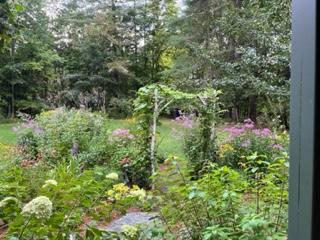 my current garden
my current garden 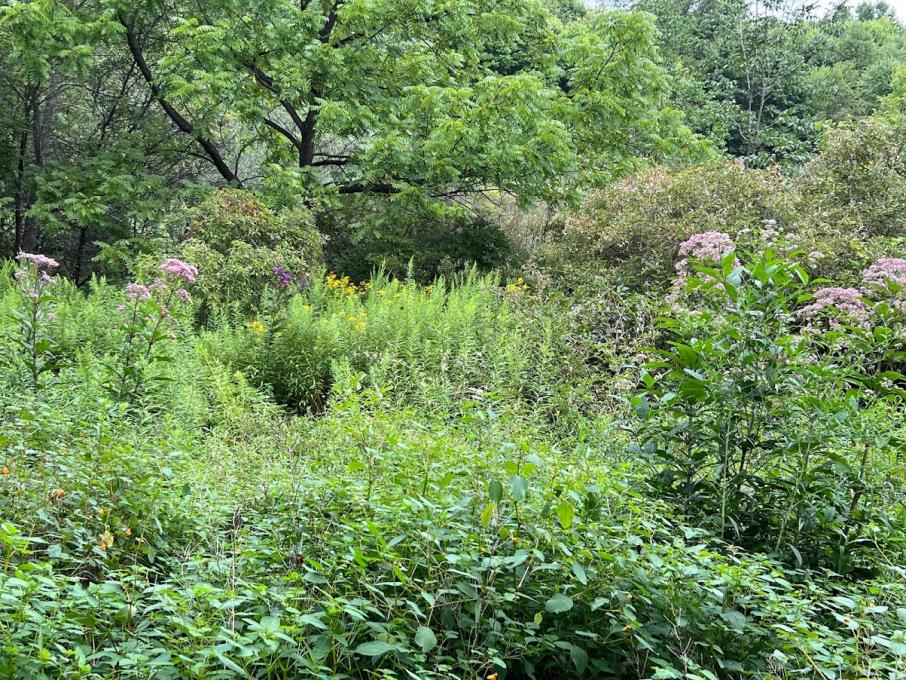

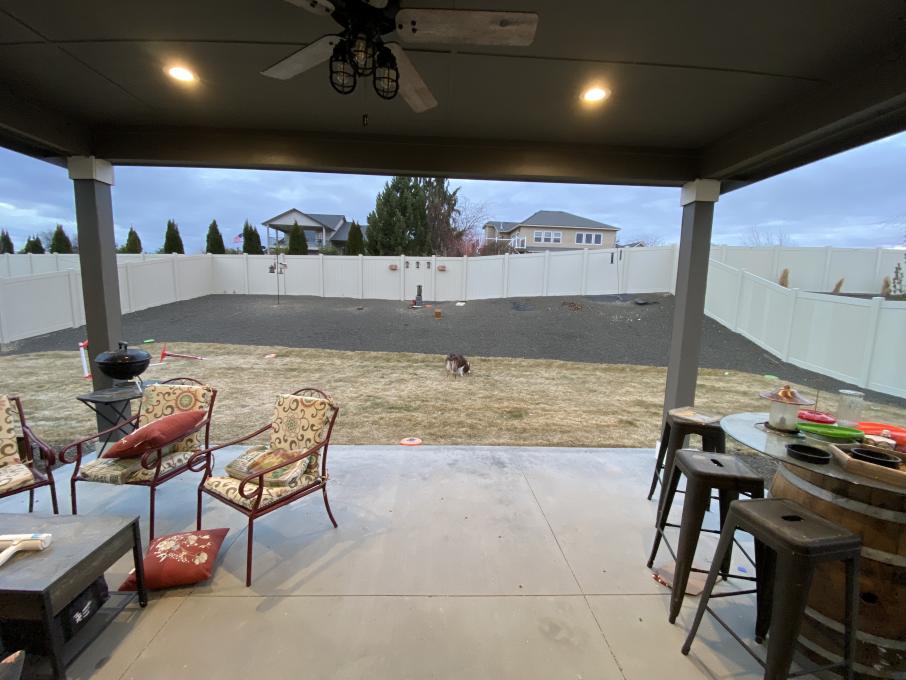 are attracting a good amount of birds but there is no habitat for them to "hang" out so I feed them and they hang out in the established yards behind me.
I need evergreens along the back fence to hide the behind neighbors, some terracing perhaps and plants and shrubs suitable for a small hillside.
I am pretty much starting from scratch. In winter our lawns go dormant. Sorry for the messy picture, we just had a wind storm and my dogs agility equipment and bird feeding items went on a walk about.
are attracting a good amount of birds but there is no habitat for them to "hang" out so I feed them and they hang out in the established yards behind me.
I need evergreens along the back fence to hide the behind neighbors, some terracing perhaps and plants and shrubs suitable for a small hillside.
I am pretty much starting from scratch. In winter our lawns go dormant. Sorry for the messy picture, we just had a wind storm and my dogs agility equipment and bird feeding items went on a walk about. 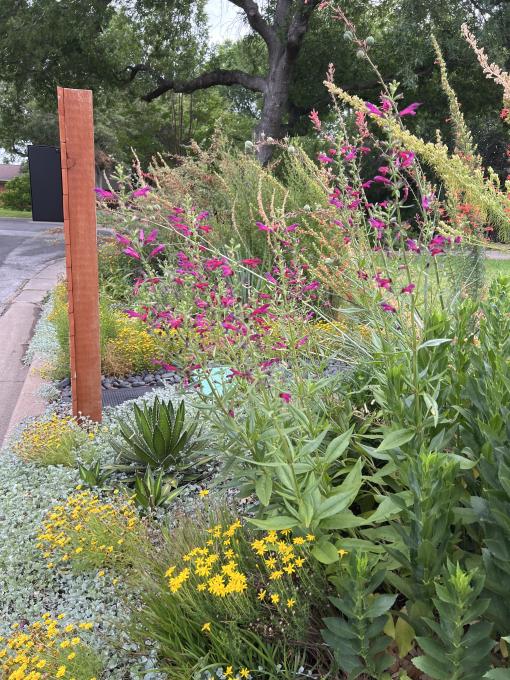
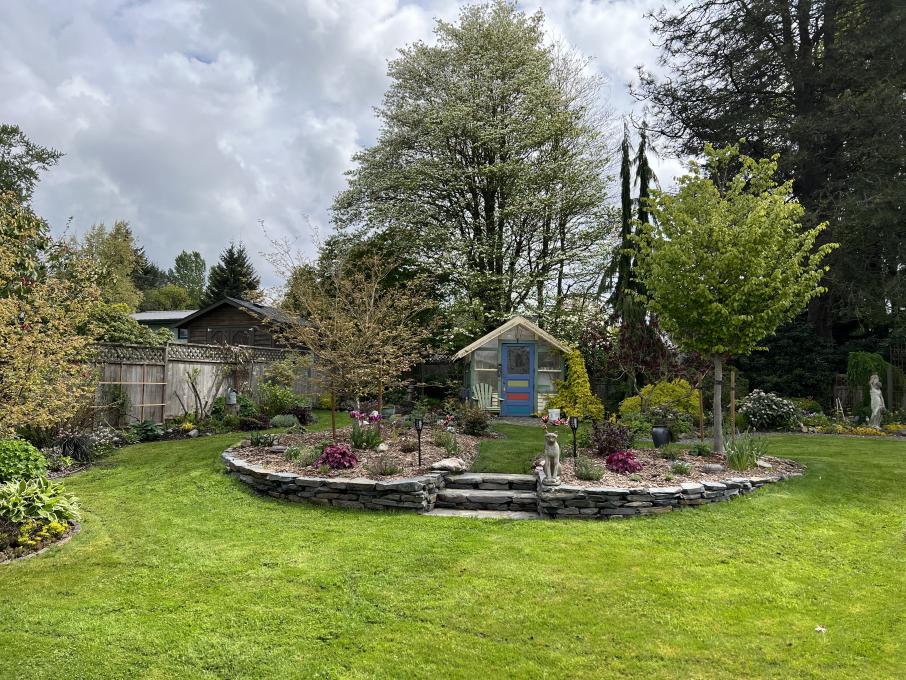
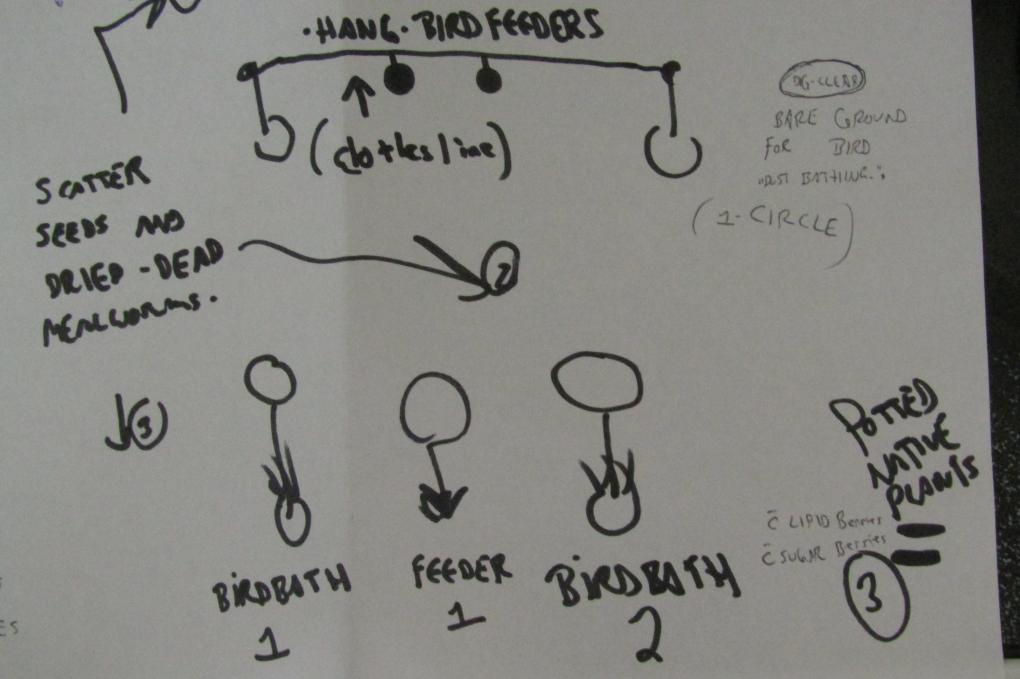
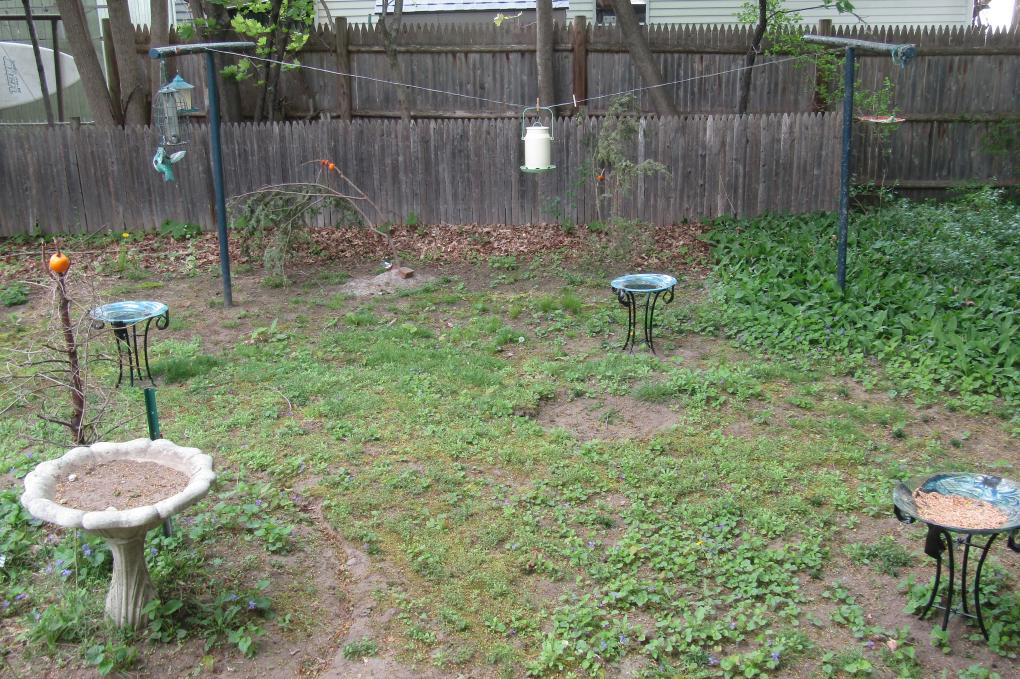 thx. bjorn k.
thx. bjorn k. 